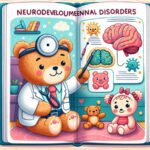Reactive Attachment Disorder (RAD) is a condition that can arise in young children who have experienced extreme instability or difficulties in early relationships, particularly with primary caregivers. Recognizing and addressing RAD early can significantly impact a child’s emotional and psychological development. This comprehensive guide aims to help new parents understand RAD, identify its symptoms, causes, and explore effective treatment options.
What is Reactive Attachment Disorder?
Reactive Attachment Disorder is a condition diagnosed in children who have had severe issues in forming emotional attachments to others due to early neglect or mistreatment. The American Psychiatric Association outlines RAD as a consistent pattern of inhibited, withdrawn behavior toward adult caregivers, manifested by a failure to initiate or respond in a developmentally appropriate fashion to most social interactions. It is categorized under Trauma and Stressor-Related Disorders in the Diagnostic and Statistical Manual of Mental Disorders, Fifth Edition (DSM-5).
RAD is rare and usually occurs before the age of 5. It’s pivotal for parents and caregivers to understand that RAD stems from environmental factors rather than anything inherent in the child. Early, stable, and nurturing relationships are crucial in preventing the development of RAD.
Signs and Symptoms of Reactive Attachment Disorder
Identifying RAD can be challenging, as symptoms might overlap with other conditions. Some common signs include an inability to form meaningful, emotional connections with caregivers, a failure to seek comfort when distressed, and a general lack of interest in social interactions. Children may also show unexplained withdrawal, fear, sadness, or irritability. Despite these challenges, it’s important to note that with the right support and interventions, improvements can be made over time.
It’s also essential to differentiate between RAD and other behavioral issues or developmental delays. Consulting with a healthcare professional who can provide a comprehensive evaluation is crucial. Early detection and intervention can greatly improve outcomes for children with RAD.
Causes of Reactive Attachment Disorder
The primary cause of Reactive Attachment Disorder is the lack of consistent and nurturing care during the early stages of a child’s life. This can result from frequent changes in caregivers, living in an orphanage, neglect, abuse, or severe parental neglect. These conditions prevent a child from forming stable attachments, which are foundational for normal social and emotional development.
Understanding the underlying causes of RAD helps in addressing the disorder more effectively. It emphasizes the importance of creating a stable and emotionally supportive environment for the child’s development.
How to Support a Child with Reactive Attachment Disorder
Supporting a child with Reactive Attachment Disorder requires patience, understanding, and a consistent caregiving environment. Building a secure attachment with the child may take time but is crucial for their emotional and psychological healing. Establishing routines, setting clear and consistent boundaries, and providing a safe environment are foundational steps. Additionally, engaging with professionals who specialize in RAD can offer invaluable support and guidance.
Therapy is often a critical component of treatment for RAD. This might include family therapy, individual therapy for the child, and parent-child interaction therapy. Each of these therapeutic approaches aims to strengthen the attachments between the child and their caregivers, improve communication, and address any underlying trauma that may be contributing to the disorder.
Professional and Community Resources for RAD
For families navigating the challenges of Reactive Attachment Disorder, accessing professional and community resources can be a lifeline. Organizations such as the Attachment & Trauma Network, Inc. provide support, education, and advocacy for families affected by attachment issues and trauma. Additionally, connecting with local support groups can offer a sense of community and shared experience that is immensely beneficial.
It’s also beneficial to explore educational resources that can provide deeper insights into RAD and how to effectively respond to the needs of a child dealing with this disorder. Websites like BabyWhysAndHows offer detailed articles and guides on a wide range of topics related to child health and development, including Reactive Attachment Disorder.
Conclusion
Reactive Attachment Disorder presents unique challenges for children and their families, but with the right support and interventions, positive outcomes can be achieved. Understanding RAD, recognizing its signs and symptoms, and seeking professional help early can make a significant difference in a child’s life. Remember, you’re not alone on this journey. Resources and support systems are available to guide you through the complexities of RAD and help your child thrive.
For more in-depth information and support on child health and development, visit our Attachment, Developmental Milestones, and Emotional Regulation sections. Understanding these foundational aspects can provide you with the tools and knowledge you need to support your child’s growth and well-being.













